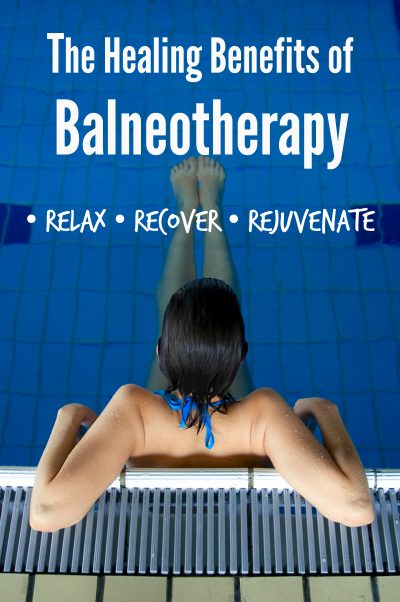What is Spa Therapy?

Many people are associating the term with an establishment for luxury beauty and wellness, eventually using some hydrotherapy features.
If you are among them, you will be surprised to learn that the term, actually originated from a small town called Spa in Belgium. The word stands for “fountain” in the Walloon language. There in the 14th century, an iron-rich spring was used by an iron master to cure his rheumatism. As a result he founded a health resort, which became famous.
Since ancient times, people like Celts, Greeks, Romans, Arabs, Japanese, Native Americans and many others appreciated the healing power of water. Wellness centers have been developed around local mineral springs, hot springs, lakes, or by the sea. The Dead Sea for example was the favorite health resort for personalities like Herod the Great or Queen Cleopatra.
Traditional Spa Therapy

In some places of the world, mainly in Europe and Asia, the traditional spa therapy (balneotherapy) has evolved into a medical specialty.
In these health resorts, the therapy is based on the natural healing power of the mineral rich water. People go to spa centers to recover with a medical prescription and under medical supervision.
While traditional/medical spa resorts are more popular with elder people being given mud packs for their arthritis, the resorts attract a diverse clientele of all ages.
The healing benefits of spa therapy
- stimulation of the immune system
- increase of circulation and detoxification
- physical and mental relaxation
- mineralization trough bathing in mineral water springs
- amelioration of gastric disorders by drinking mineral water
- physical rehabilitation – reducing symptoms of arthritis and back pain
- normalization of gland functions and endocrine system
Many spa treatments are based on relaxation, detoxification programs or lose weight programs with specific diets.

At spa resorts you can also benefit from rest and recreation while taking advantage of the surrounding environment, the earth and solar energy, not to mention the negative ions produced by the water evaporation.
Additional spa therapies
Besides the treatments related to balneotherapy, resorts and day spa centers offer additional therapies and beauty treatments, like:
Bath scrubs – A practice used for skin cleansing, by exfoliating the outer layer of dead skin and leaving the body smooth and clean. It can be done with different mixtures of bath salts, seaweed or other abrasive materials, combined with lotions of mineral oils.

Pelotherapy (Fango therapy or Mud therapy) and Herbal wraps – In addition to bathing, in spa and healing resorts, you can have the body wrapped in specific types of mud, which penetrates the skin, promoting cleansing, healing and relaxation.
Hydrotherapy – Water Therapy is often an aspect of balneotherapy and consists in exercises in water assisted by specialized personal. They are specifically conceived for various types of health conditions.

Massage – Is a popular adjunct to different forms of spa therapy and balneotherapy. Hydro-massage is also a common practice. It consists in underwater massage with jets, alternating hot and cold showers. The hydro-massage helps relax the muscles, improve circulation and body flexibility.
Sauna – Is a dry heated room, where the body perspires due to the increased circulation and dry air, and eliminates toxins.

Steam Bath – takes place in a room lined with ceramic and heated with steam (which can can be mineral water vapors) and it is often better tolerated than sauna. It also increases the blood circulation and help eliminating the toxins.
When looking for the proper spa therapy for you, the best guide is Healing Springs book by Nathaniel Altman
Many of these spa practices and therapies can however been reproduced at home in the peace of your own bathroom

